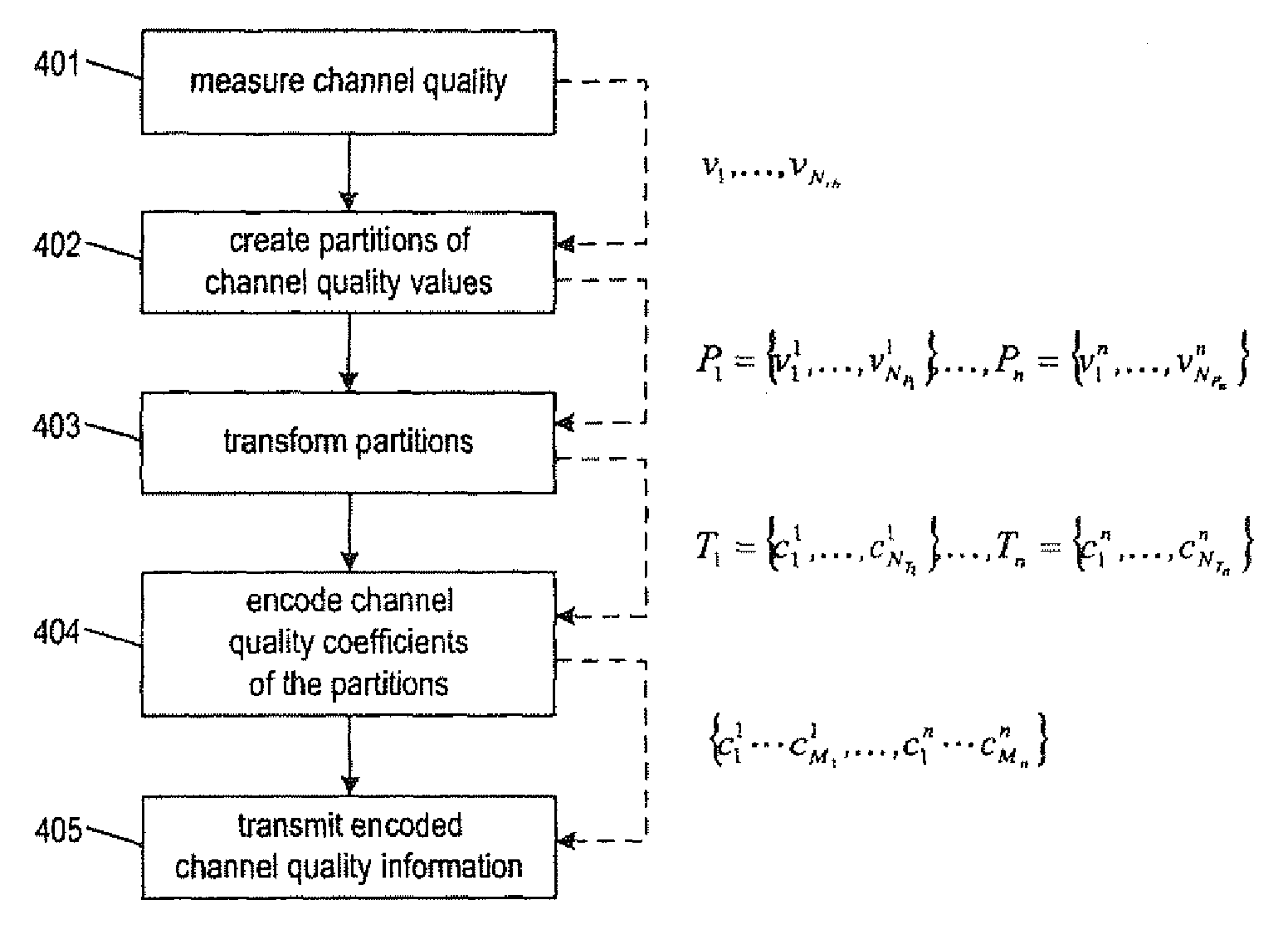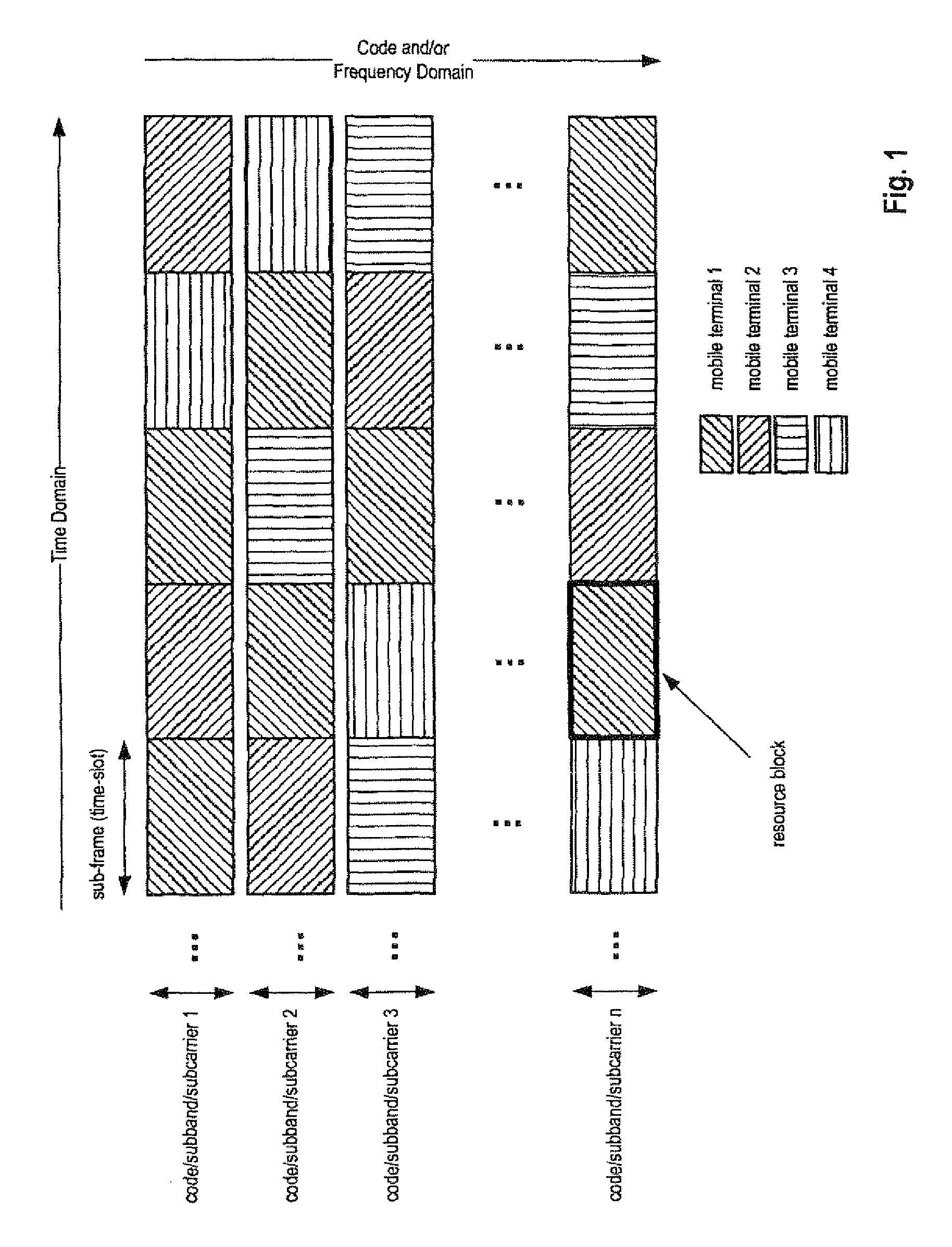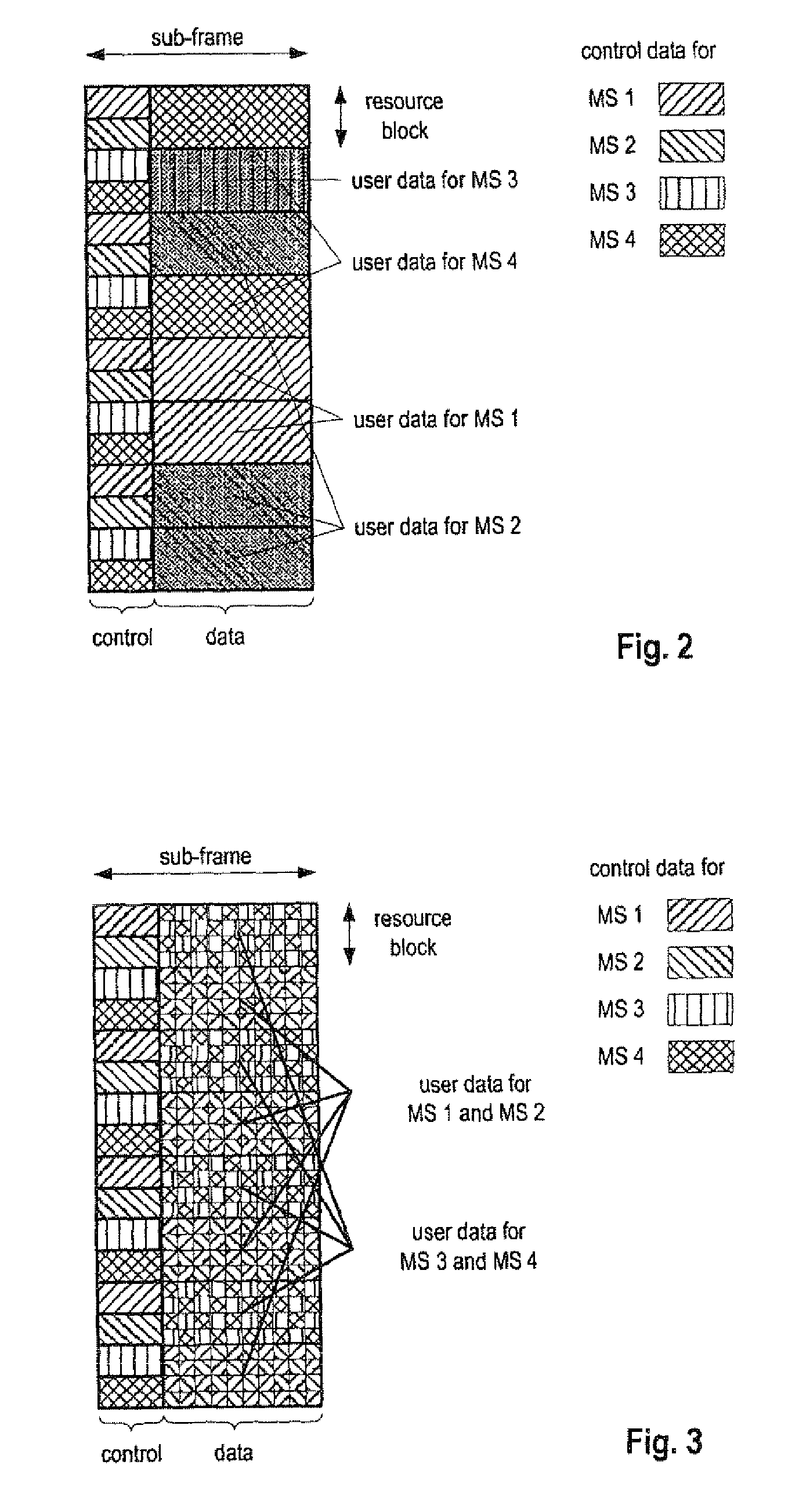Communication scheme for channel quality information
a communication scheme and channel quality technology, applied in the field of channel quality information communication scheme, can solve the problems of low accuracy of reconstructed resource block-wise channel quality information, inability to meet the requirements of a transmission system, and inability to offer optimal solutions for transmitting cqi information. dct-based schemes can solve the problem of low signalling overhead of index signals, and achieve the effect of reducing the overhead of index signalling
- Summary
- Abstract
- Description
- Claims
- Application Information
AI Technical Summary
Benefits of technology
Problems solved by technology
Method used
Image
Examples
Embodiment Construction
[0128]Before outlining the concepts and the ideas of the invention according to different embodiments in further detail, the following notation used herein should be recognized:[0129]Nrb denotes the total number of resource unit of a channel,[0130]vi or vij denotes a channel quality value i for resource unit i, where i=,K,NRB, j may indicate the partition Pj, to which the channel quality value has been assigned[0131]NPi denotes the number of channel quality values in partition Pi [0132]Pi={v1i,K, vNAi} denotes a set or partition having NPi channel quality values[0133]ci or cij denotes a channel quality coefficient i, j may indicate the transformed partition Tj of the channel quality coefficient[0134]NTi denotes the number of channel quality coefficients in a set or transformed partition Ti
Ti={c1i,K,cNTii}[0135]Ti={c1i,K,cNT} denotes a set or transformed partition having NTi channel quality coefficients obtained by transforming partition Pi [0136]Nr denoted the total number of define...
PUM
 Login to View More
Login to View More Abstract
Description
Claims
Application Information
 Login to View More
Login to View More - R&D
- Intellectual Property
- Life Sciences
- Materials
- Tech Scout
- Unparalleled Data Quality
- Higher Quality Content
- 60% Fewer Hallucinations
Browse by: Latest US Patents, China's latest patents, Technical Efficacy Thesaurus, Application Domain, Technology Topic, Popular Technical Reports.
© 2025 PatSnap. All rights reserved.Legal|Privacy policy|Modern Slavery Act Transparency Statement|Sitemap|About US| Contact US: help@patsnap.com



